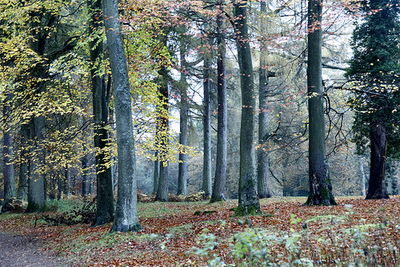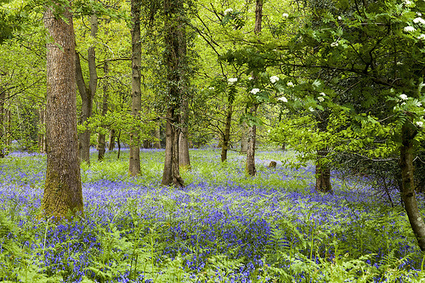 Forest of Dean (John McConnico CC BY 2.0)
Forest of Dean (John McConnico CC BY 2.0) Trees feature prominently in the human psyche. Many of us are drawn to them as major symbols of a natural and healthy environment. Trees span generations and have a permanence which seems to defy the fragility of human existence, forming markers and providing foci of memories and events recorded in history. Trees have been and still are the most prominent permanent features in the landscape. They form boundary markers and many individual trees are commemorated in names which record their importance, symbolism and associated events – The Tree of Life, The Mitre Oak where the Bishops of Worcester and Wales met, The Sherwood Oak associated with Robin Hood, Adam and Eve (two ancient oaks that once stood in Moreton on Lugg Herefordshire). Our woodlands have the same associations, ‘Flora’s Wood’, for example, planted and named to commemorate the tragic death of a loved daughter. Forests are linked with ideas of freedom, environmentalism, tree hugging, the natural. Our conversations with trees are well developed, deep seated and profound.
There are many folklore associations between trees and conversations. The wonderful tree, the Black Poplar featured by Constable in his landscape paintings, is said to talk to the traveller as its leaves rustle and chatter in the breeze and to foretell the coming of bad weather - an approaching storm. But the conversation continues in the use of a tree's timber, the structure of the grain, its unique qualities and precise memory locked within its growth. The Ginkgo (an ancient tree far preceding the existence of human life) continues to express its geological pedigree through its unique aesthetic where we attempt to capture its longevity by extracting herbal products in the belief that we can assimilate its apparent ability to defeat time.
 Forest of Dean Bluebells (kennysarmy CC BY-NC-ND 2.0)
Forest of Dean Bluebells (kennysarmy CC BY-NC-ND 2.0) Performative approaches are gaining popularity and credibility as important qualitative technique in the fields of anthropology, cultural studies and similar. They require specific tasking/actions involving shared interactions and experiences highlighted as helping to understand human behaviour, especially regarding aspects that have problematic representation (see Wikipedia's performative turn for a brief overview).
We will use the approach to elicit our conversations with trees, we will linger in the forest, listen to the trees, ‘tune in’ and hold our conversations, examine their memories, work with their very substance of the trees to feel their grain and pattern of growth. We will consider their different languages and expressions of form and function, their aesthetic, we will sensitise ourselves to the qualities, properties and processes of the trees. We will hear from our hosts, the Wye Valley AONB about their work involving the unique qualities of the forest and their own conversations, how they elicited them and the consequences of their actions.
 RSS Feed
RSS Feed
